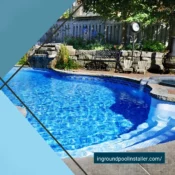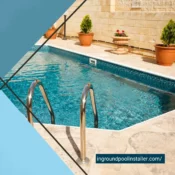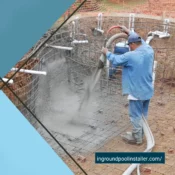How to Plan an Inground Pool Renovation for Maximum Value

How to Plan an Inground Pool Renovation for Maximum Value
Renovating an inground pool is an excellent way to increase your home’s value, improve energy efficiency, and enhance your outdoor space’s overall appeal. Whether your pool needs cosmetic updates, modern technology, or structural improvements, proper planning ensures you get the best return on investment. A well-thought-out renovation can transform your pool into a luxurious retreat while making maintenance easier and extending its lifespan. In this guide, we’ll cover the essential steps to plan an inground pool renovation for maximum value.
1. Assess Your Pool’s Condition
Before diving into renovations, start by evaluating the current condition of your pool. Identify areas that need improvement, such as:
- Cracked or peeling plaster – A sign your pool needs resurfacing.
- Outdated tiles and coping – Dull or broken tiles can reduce visual appeal.
- Inefficient filtration or heating systems – Upgrading to energy-efficient equipment can save money.
- Deck damage or outdated layout – Enhancing the pool deck can improve both function and aesthetics.
Hiring a professional pool inspection can help pinpoint issues that require attention and guide your renovation plan.
2. Set a Realistic Budget
Renovations can vary in cost depending on the extent of upgrades. Common expenses include:
- Pool resurfacing: $5,000 - $10,000 (depending on material).
- Tile and coping replacement: $3,000 - $8,000.
- Energy-efficient pool equipment: $1,500 - $5,000.
- Lighting and automation upgrades: $1,000 - $3,500.
- Deck expansion or refinishing: $4,000 - $12,000.
Prioritize improvements that offer long-term value and consider obtaining multiple quotes to ensure you’re getting the best deal.
3. Choose High-Value Upgrades
Energy-Efficient Systems
Investing in variable-speed pumps, LED lighting, and solar heaters can significantly lower energy bills while improving functionality.
Modern Resurfacing Options
Upgrade to durable materials like pebble finish, quartz, or glass bead finishes for a longer-lasting and visually stunning pool.
Smart Pool Technology
Adding automated controls, remote monitoring, and self-cleaning systems enhances convenience and reduces maintenance efforts.
Enhanced Water Features
Features like waterfalls, deck jets, and LED-lit fountains add luxury appeal and increase home resale value.
Safety and Accessibility Upgrades
For families and older adults, consider installing Baja shelves, non-slip decking, and handrails to improve safety.
4. Plan for Seasonal Renovation
Timing your renovation correctly ensures minimal disruption and maximum enjoyment.
- Best time for renovation: Fall and winter (to avoid peak pool season).
- Average project timeline: 4 to 8 weeks, depending on complexity.
Starting your renovation in the off-season ensures contractor availability and potential cost savings.
A well-planned inground pool renovation adds beauty, functionality, and value to your home. By assessing your pool’s condition, setting a budget, and choosing high-return upgrades, you can transform your backyard into a stunning and energy-efficient retreat.
All Categories
- Concrete
- Concrete
- Concrete pools
- Construction
- Custom Features and Add-ons
- Design
- Design
- Design
- Design & Construction
- Design and Planning
- Features & Customization
- Infinity edge
- inground pool
- inground pool builder
- inground pool installer
- Installation
- Installation Process
- Legal & Administrative
- Materials
- planning and design
- Pool Aesthetics and Customization
- Pool Design
- Pool Equipment
- Pool Features
- Pool Features
- Pool Installation Process
- Pool Materials
- Pool Materials
- Pool Types
- Project Planning
- Renovation
- Resurfacing
- top sights
- Types of Inground Pools
- Types of Inground Pools
- Types of Inground Pools
- Types of Inground Pools
- Water Treatment



